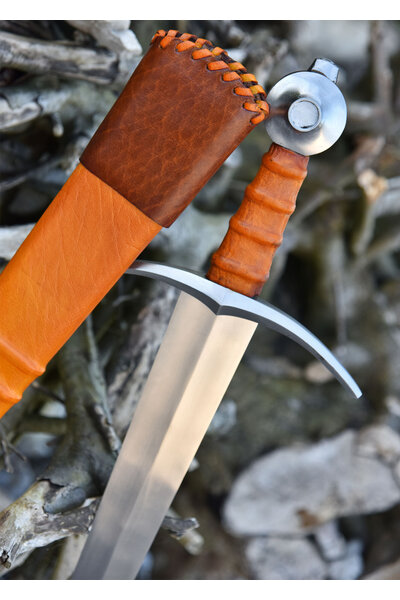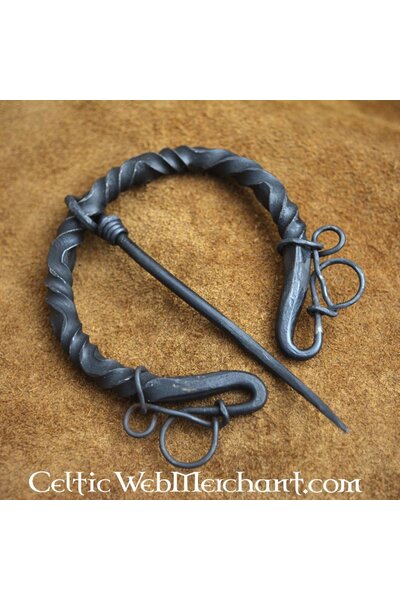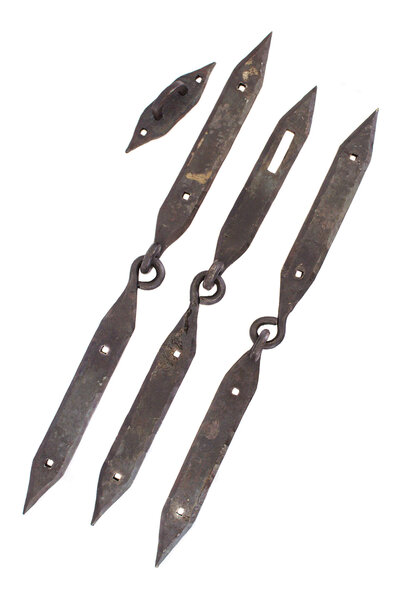Product description
This beautiful knight's sword was part of the collection of Comte de Nieuwerkerke, a French sculptor and art collector. The original provenance of the sword, which is now in the Wallace Collection in London, is unknown. But it is likely that it was found in France, given the pronounced signs of corrosion that indicate it was a river find. According to the Oakeshott typology it is classified as Type XV and dates from approximately 1350 - 1400. This dating suggests that the sword was used during the Hundred Years' War between France and England. This replica has a semi-sharp blade that tapers sharply towards the tip. The hilt consists of a crossguard that is curved towards the blade, a wooden grip wrapped in brown leather, and a pommel with a round recess in the middle. The sword comes with a brown wooden/leather scabbard.
Details:
Material: Carbon Steel, wood, leather
Rockwell hardness: 48 – 52 HRC
Total length: approx. 94 cm
Blade length: approx. 75 cm
Blade thickness: approx. 4,5 mm
Hilt length: approx. 18 cm cm (grip section approx. 10,5 cm)
Max. blade width: approx. 5,5 cm
Point of balance: approx. 8 cm below cross-guard
Edge: semi-sharp (1 mm)
Incl. wood and leather scabbard
Weight without scabbard: approx. 1,1 kg
Weight with scabbard: approx. 1,5 kg
Based on a historical original
Shipment weight (g): 2500 *
We do not sell this product to customers under the age of 18. Click here for more information on the European arms acts.
This item is produced in limited quantities only. This means that every piece is unique. Sizes & finish may vary lightly from piece to piece.
Prevent rust and corrosion by oiling your weapons regularly. Remove rust easily with black sandpaper. Remove burrs with a whetstone. Make sure you have removed all burrs before using a battle-ready weapon, as they can cause wounds.
When packaging this item, we exclusively use 100% recycled plastic and recycled paper/cardboard from FSC certified forests. We reuse a large part of the material directly without the intervention of a recycling process.
Recycle the material by separating your waste:
1. Cardboard: separate or reuse your paper.
2. Plastic cushions, clothing bags and plastic tape: separate or reuse your plastic. If possible, pierce the cushions with a volume reduction needle.
3. Paper packaging for jewelry and small items: these have a plastic inner layer. Remove these, then separate your paper and plastic.
Read here about how we are committed to sustainability.























